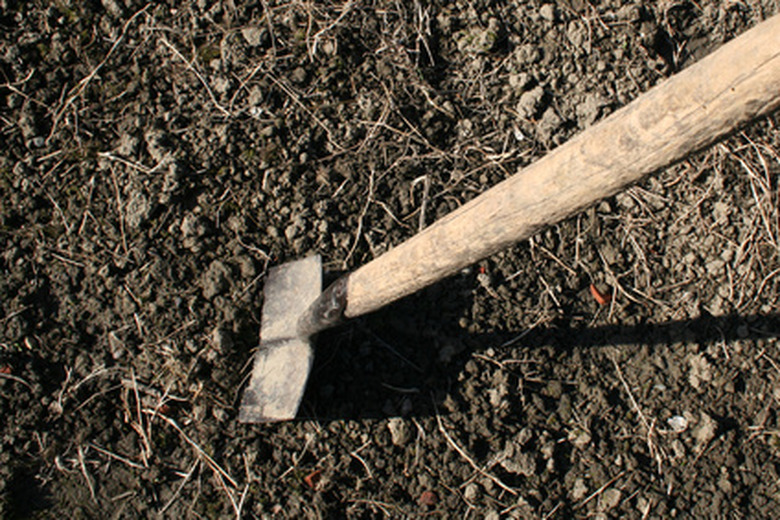How To Compost Kudzu
Things Needed
- Shears
- 3-foot-wide chicken wire roll
- Wire cutters
- Peat moss
- Kitchen scraps
- Clover
- Grass clippings
- Dead leaves
- Sawdust
- Wood chips
- Garden hose
- Pitchfork
- Cooking thermometer
Kudzu has a reputation as "the vine that ate the South" because of its aggressive growth. In parts of the South where mild winters do not check kudzu's growth, it can grow up to 12 inches daily. The plant was originally introduced to North America from Asia in 1876 as an ornamental vine, forage plant and ground cover to prevent erosion. Eradicating kudzu may take up to 10 years of continual mowing. During that time, you can recycle the green growth by turning it into compost.
Step 1
Shred kudzu into 1-inch pieces with a pair of shears. Kudzu is a vine plant filled with cellulose. Chopping it into smaller pieces will help it break down faster.
- Kudzu has a reputation as "the vine that ate the South" because of its aggressive growth.
- In parts of the South where mild winters do not check kudzu's growth, it can grow up to 12 inches daily.
Step 2
Bend a piece of chicken wire into a circle at least 3 feet in diameter by 3 feet tall. Crimp the ends together.
Step 3
Collect compost material to layer with kudzu to create hot compost. For the hot compost process, collect nitrogen-filled organic green material and carbon-filled organic brown material. Examples of organic green material include peat moss, kitchen scraps, clover and grass clippings. Organic brown material includes dead leaves, sawdust and wood chips. Kudzu harvested while it is growing is an organic green material. In northern latitudes where harsher winters will kill the plant back, kudzu is considered an organic brown.
- Bend a piece of chicken wire into a circle at least 3 feet in diameter by 3 feet tall.
- In northern latitudes where harsher winters will kill the plant back, kudzu is considered an organic brown.
Step 4
Place the compost materials into your bin in 4-inch-thick layers. Alternate each layer so that one layer is organic green material and the next is organic brown material. Use a garden hose to wet the material as you pile it so that the entire pile is uniformly as damp as a wrung-out sponge.
Step 5
Measure the compost temperature daily with a cooking thermometer. Compost should heat up in the center to between 130 and 150 degrees Fahrenheit. Stir the compost if the temperature drops below 120 degrees so that it heats up again. The compost will gradually decompose into a soil-like consistency. Compost is ready to use when no large plant particles are left.
- Place the compost materials into your bin in 4-inch-thick layers.
- Stir the compost if the temperature drops below 120 degrees so that it heats up again.
Tip
Do not use kudzu to compost if you have sprayed it with an herbicide. The herbicide will become a part of the compost and may kill any plant you use it on.
